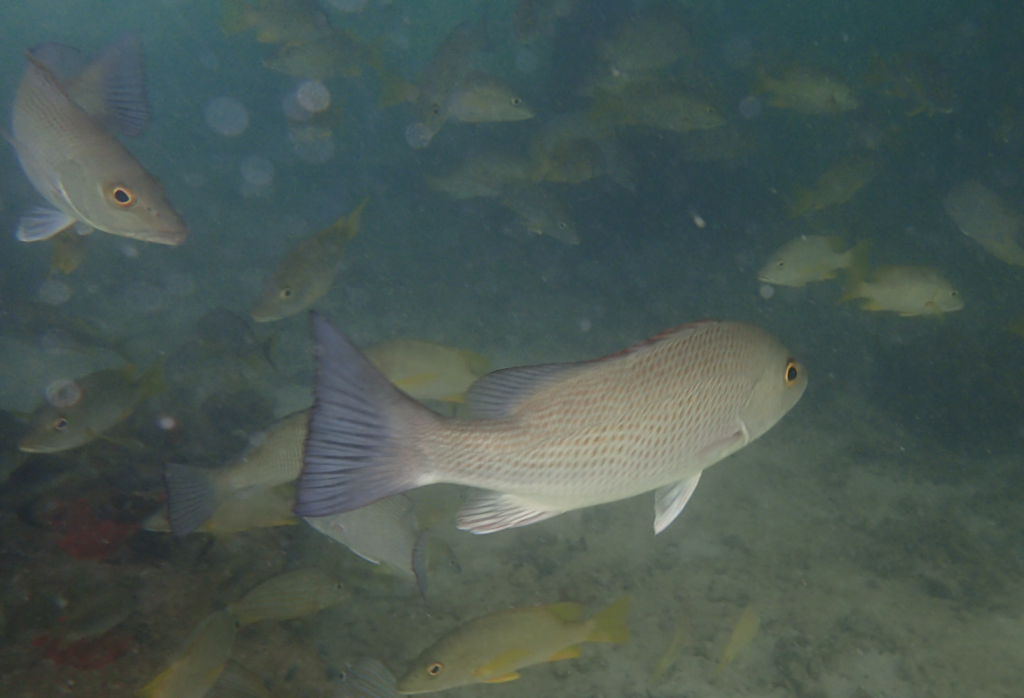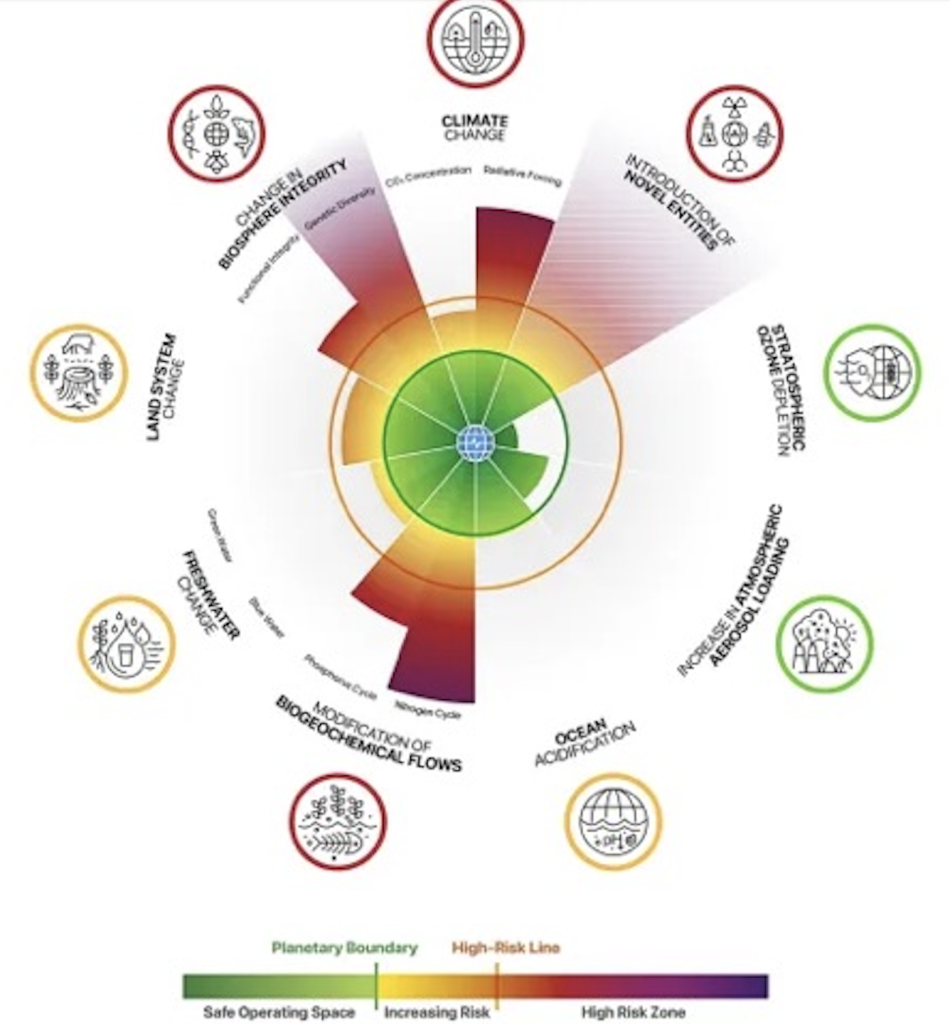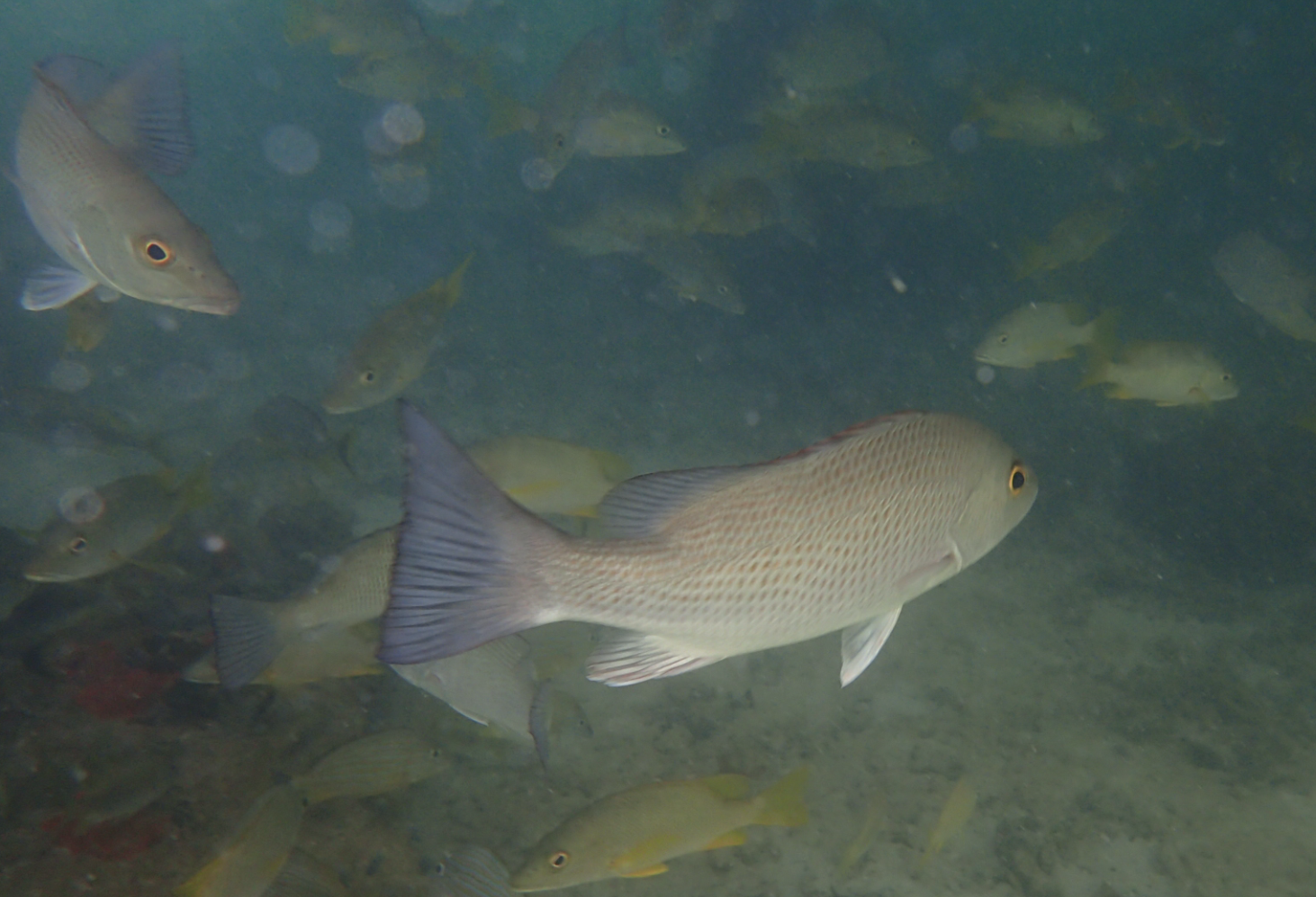A few years ago, I was snorkeling in the waters of Bocas del Toro, a beautiful bay in Panama. There, a curious fish looked me straight in the eye. “Hello, I live here, what are you doing here?”

I looked at the situation through his eyes and realized how carelessly we humans treat water in our environment. We build wind farms there, use it as a highway and dumping ground for cargo ships, and as a mining area for precious metals. We discharge our wastewater into the rivers, which then flows to the sea and the ocean. To those fish. For whom that water is vital.
Planetary Boundaries
Looking at the Netherlands as an example, fortunately all sewage systems have been connected to a treatment plant. But worldwide, more than 80% of sewage water flows untreated to rivers, lakes, and seas. And that’s not even counting direct discharges and runoff. It’s truly a miracle that so much life still exists. Nature has an impressive capacity for recovery, but that capacity has limits. Looking at the nine planetary boundaries (as shown in the image), it unfortunately appears that ocean acidification has now also reached a critical level. Source: https://www.pik-potsdam.de/en/news/latest-news/seven-of-nine-planetary-boundaries-now-breached-2013-ocean-acidification-joins-the-danger-zone (internet, October 15, 2025)
Returning from the global issue of planetary boundaries to the Netherlands, we see three groups of substances that are of most concern based on their nature and magnitude:
– PFAS: persistent chemicals that do not break down and accumulate in ecosystems. They are found in firefighting foam, coatings, and even cosmetics.
– Pesticides: pesticides that end up in ditches and rivers via agricultural runoff and are harmful to aquatic life. – Pharmaceutical residues: hormone-disrupting substances and antibiotics that enter the environment via our sewage.
Good news

These substances are difficult to remove and remain active for a long time (‘forever toxic chemicals’). Moreover, they not only cause pollution but also indirectly contribute to ocean acidification (see box). So, that all doesn’t sound great. But there is also good news. If we look at PFAS, we see that there is a lot of work being done on innovations in the field of alternative, environmentally friendly materials. Regarding crop protection products, there is increasing attention for conscious dosing and the use of less harmful alternatives. When it comes to removing pharmaceutical residues from sewage, additional purification steps are possible, such as ozonation and activated carbon filtration. These techniques often remove more than 80% of the pharmaceutical residues from the sewage. Adjustments to the treatment plants are therefore possible, but very expensive. That is why it is also important that we are more mindful of our medication use: using fewer medications saves costs and directly leads to less pollution of surface water.
How pollution and ocean acidification interact. Ocean acidification is primarily caused by CO₂, but substances of concern such as PFAS, pesticides, and pharmaceutical residues indirectly exacerbate the stress. They accumulate in the Sea Surface Microlayer (SML)—a crucial layer for gas exchange—and affect microbial processes that regulate the carbon cycle. In coastal areas, often including coral zones, this leads to a dual threat: acidification and pollution. Together, they make the restoration of vulnerable ecosystems even more challenging.
European Guidelines
Two European directives have been developed to protect our surface and groundwater from pollution: the Water Framework Directive and the Urban Wastewater Treatment Directive. Every measure to reduce pollution and discharges, every innovation in water treatment, contributes to recovery. The acidifying ocean benefits from this, regardless of all actions to reduce CO₂. If we give the water a chance to remain healthy, it will continue to work for our benefit, as Earth’s inhabitants. And to the benefit of the water dwellers, like that curious fish.

